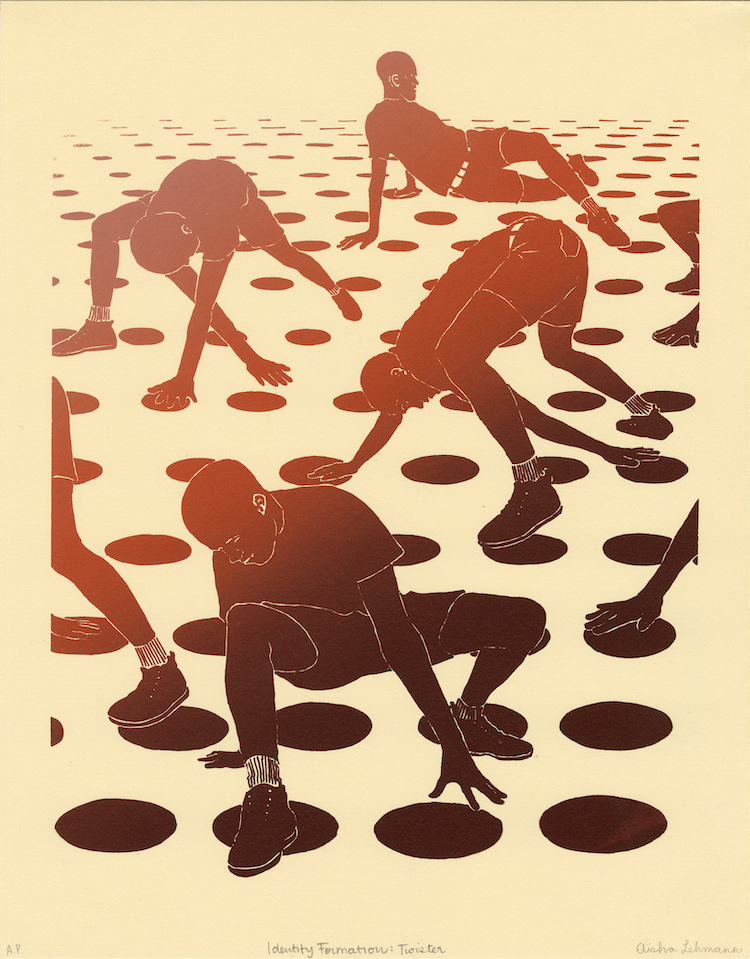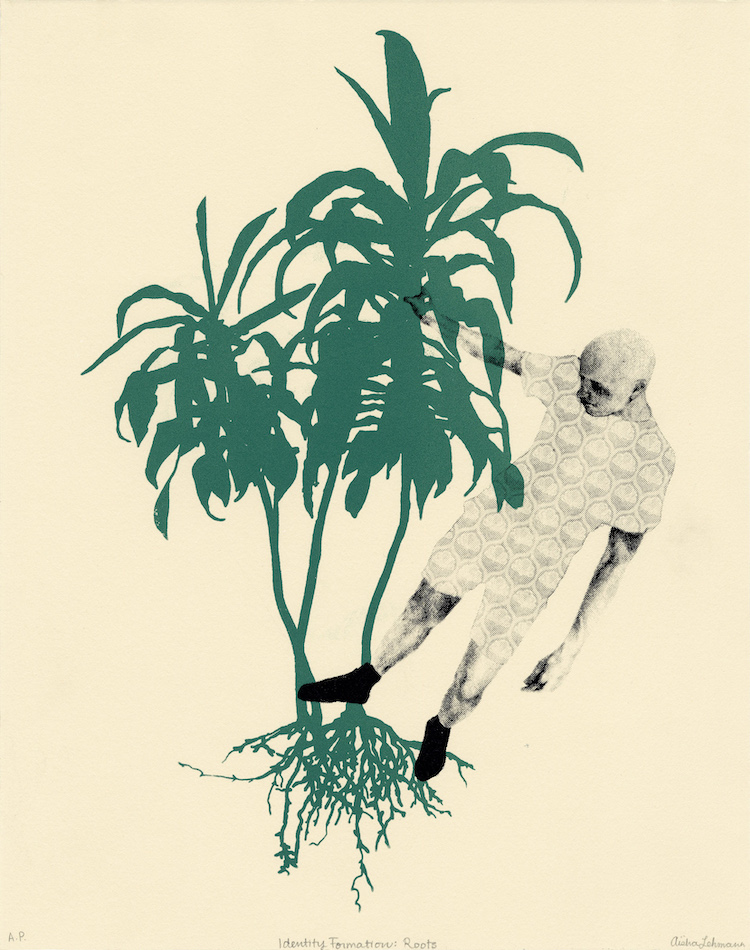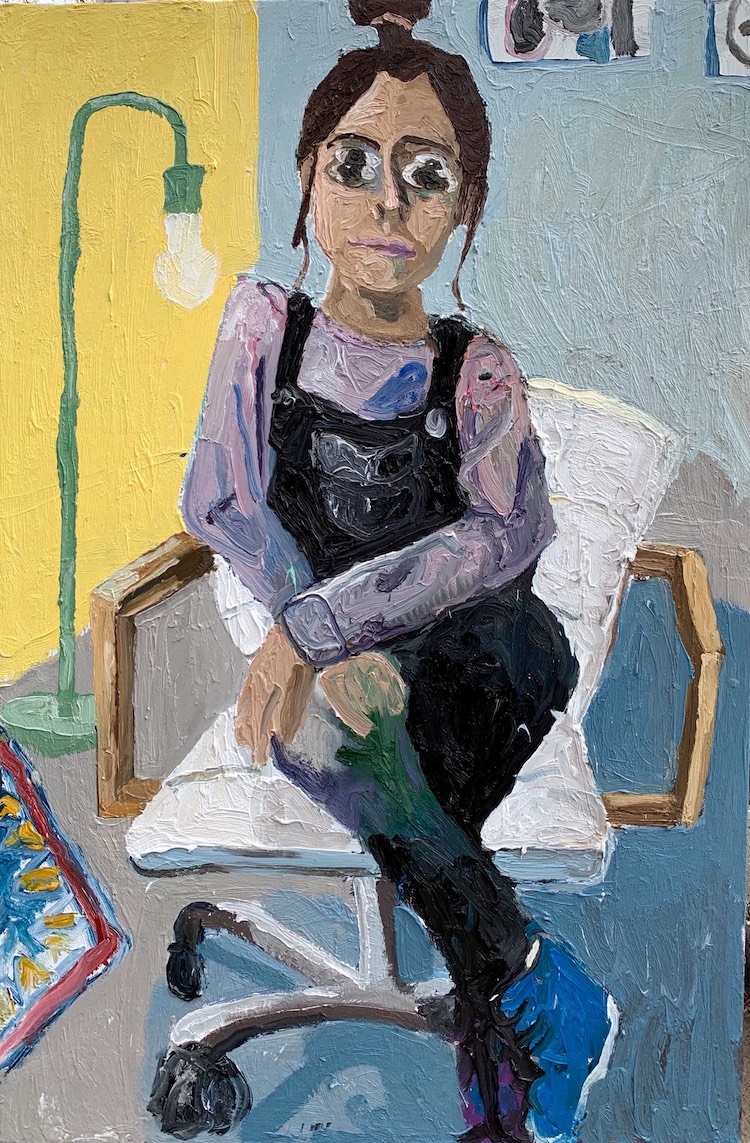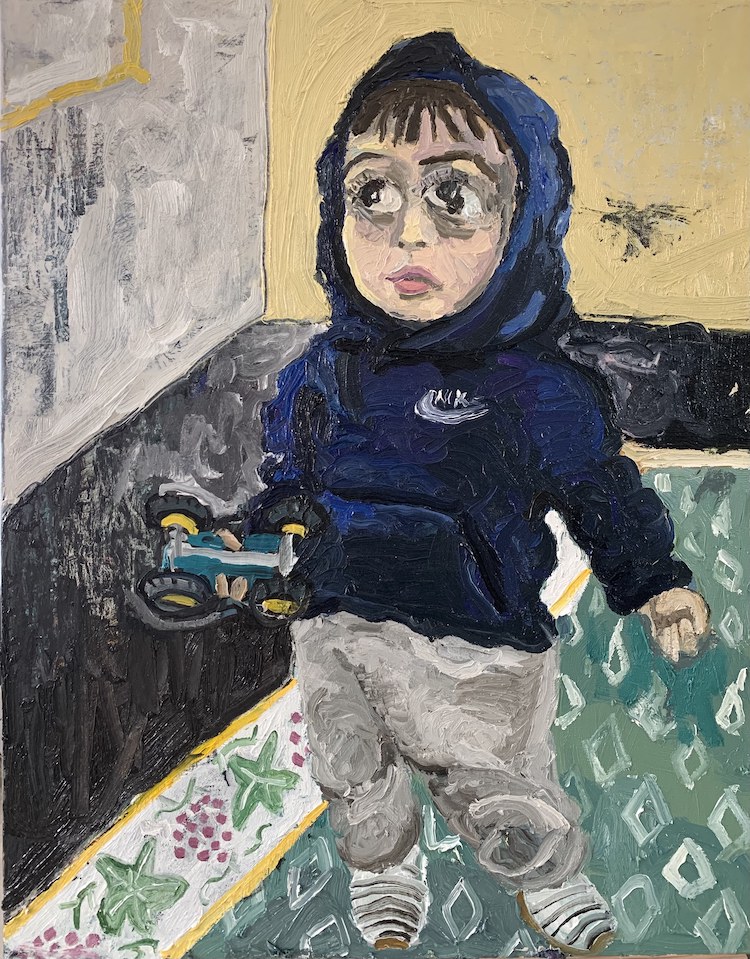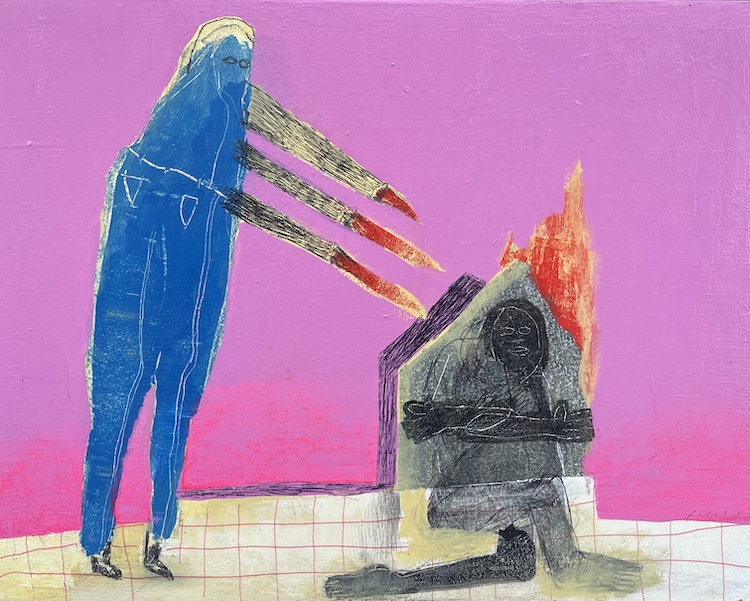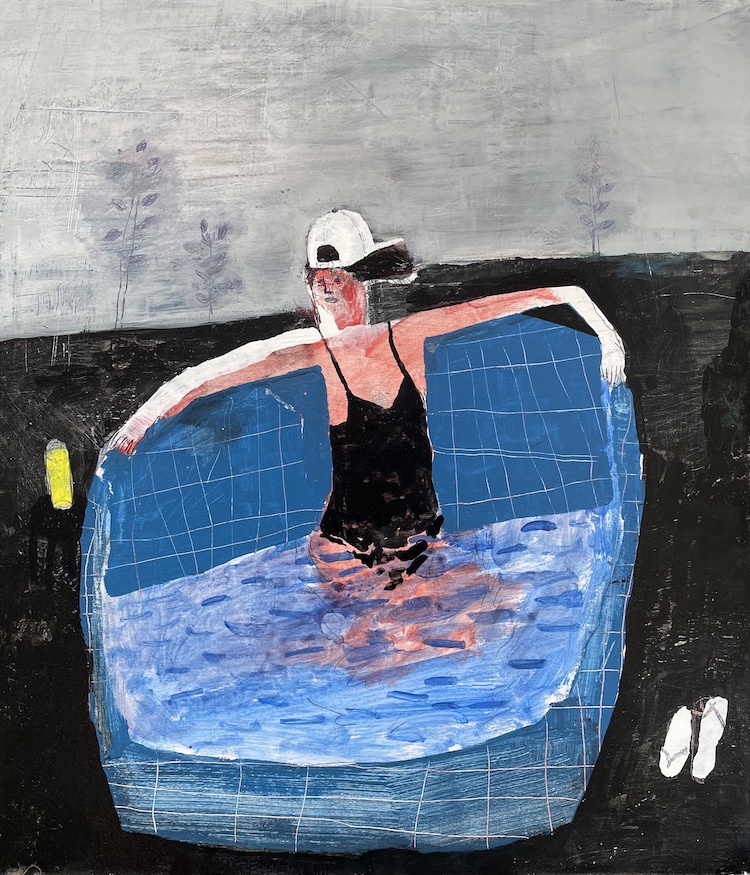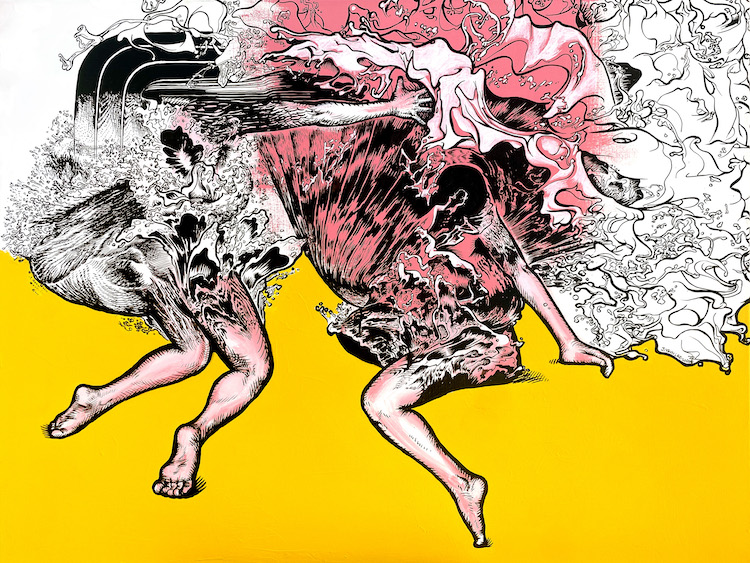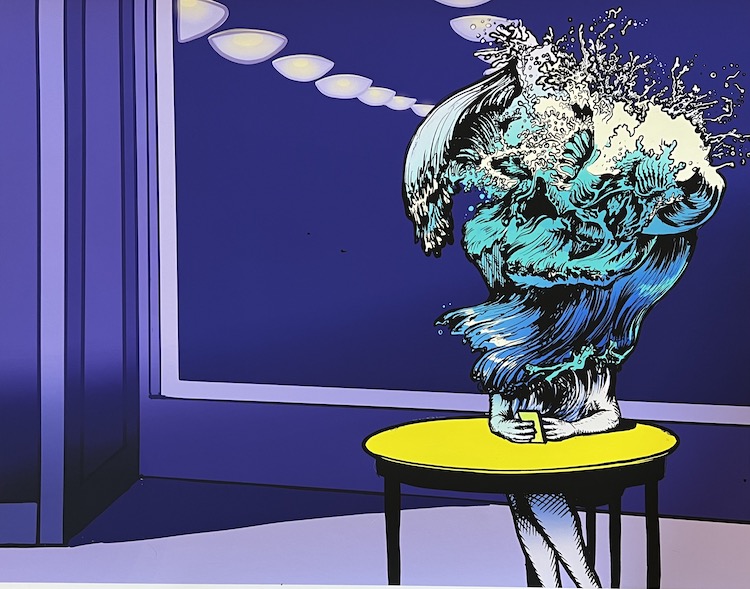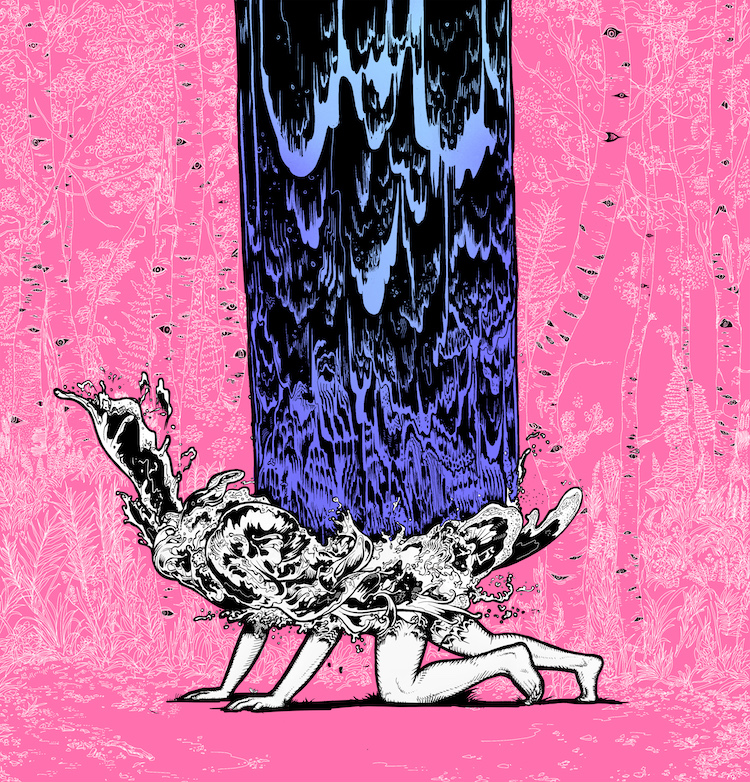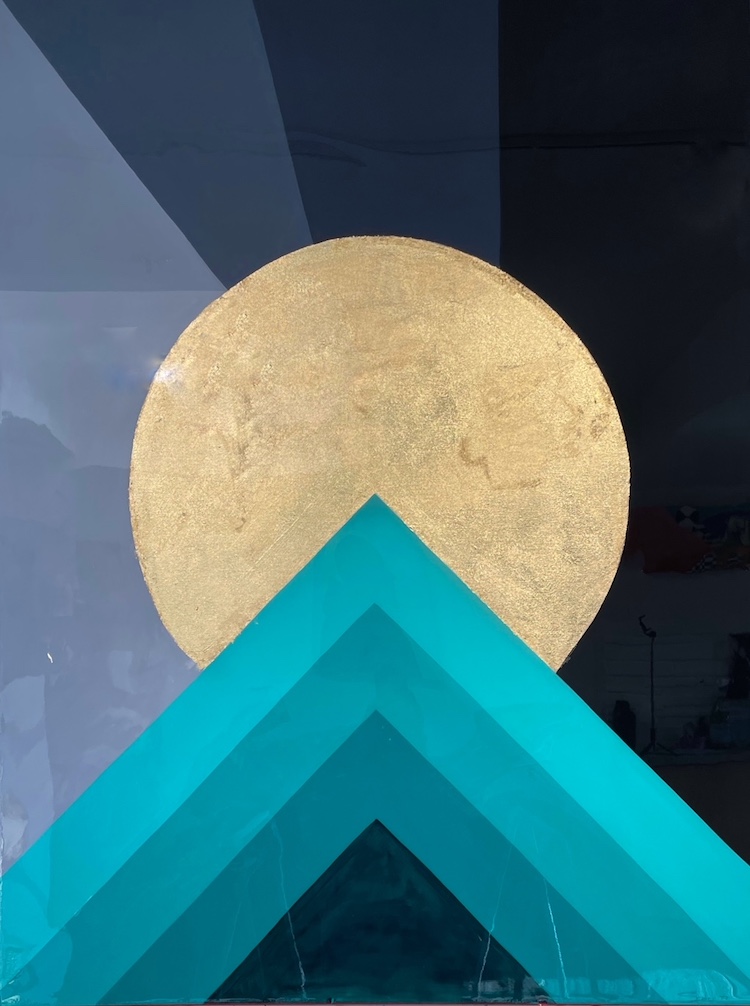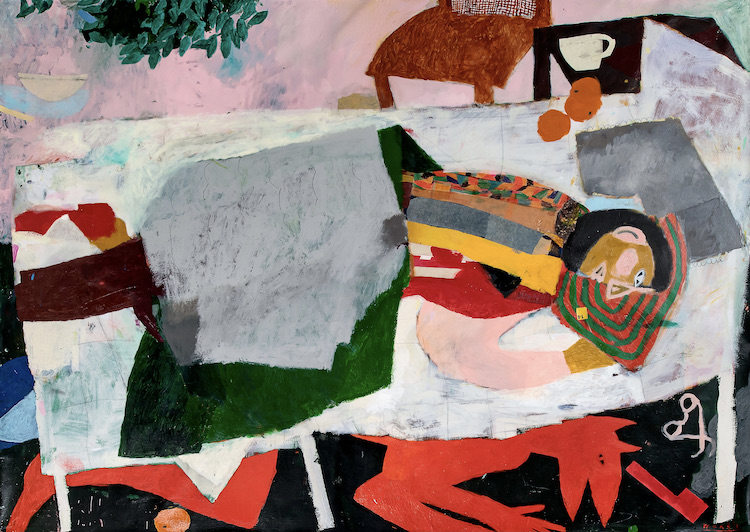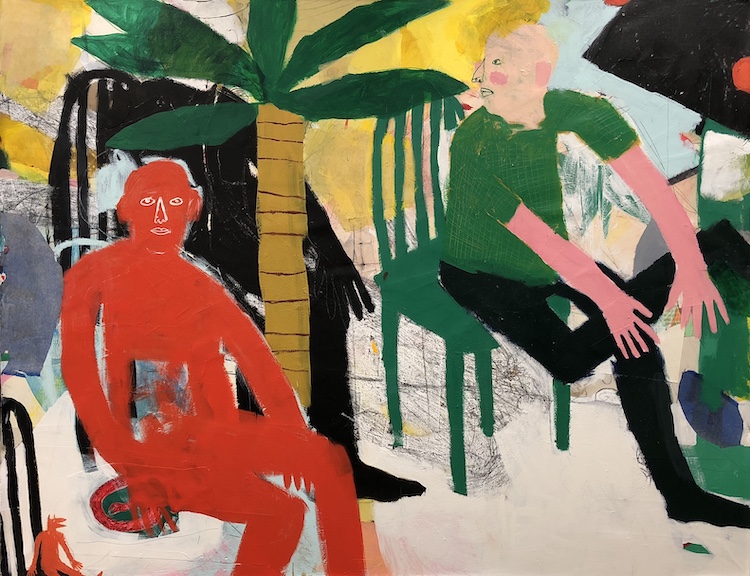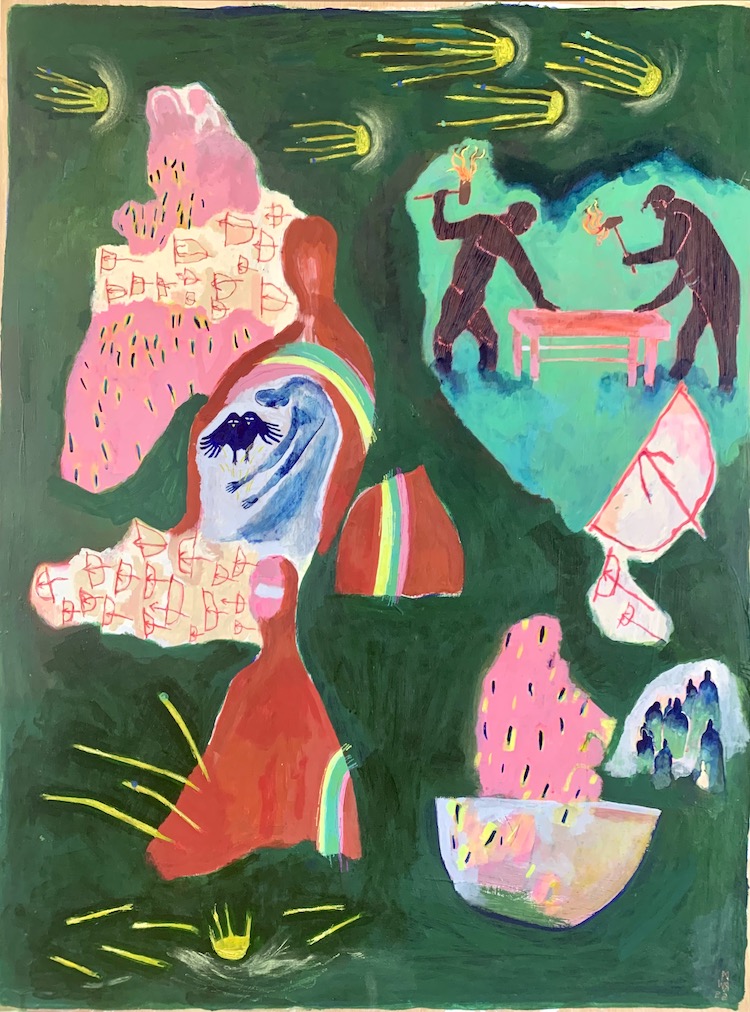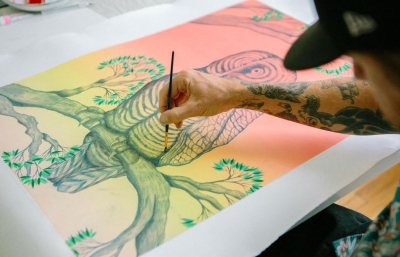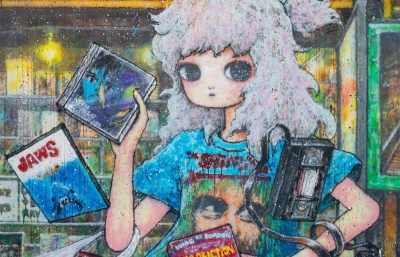Last month, Modern West in Salt Lake City opened You May Find Yourself, a group show featuring works by Andrew Alba, Fidalis Buehler, Jiyoun Lee-Lodge, Aïsha Lehmann, Mitch Mantle, Wren Ross, and Matthew Sketch. Today, Juxtapoz shares our conversations with the artists, a group chat about what the show means to them, working in such a contermporary landscape and the changing scene of Salt Lake City.
Juxtapoz: How does the context of Western American atmosphere fit into your work? And we are curious perhaps your perceptions of this place before and after living in it? Or your perceptions of it if you have always lived here?
Andrew Alba: I was born here and lived here most of my life. I lived a few years in the Pacific Northwest but ultimately felt that the wonderful greenery and growth was slightly suffocating to me as someone who has lived in the desert his whole life. I know the big sky,horizon, landscapes and colors here offer a great deal of influence to my work. As well as the people and history of this place.
Fidalis Buehler: First of all, the perception of the West is a European/outsider perspective. The idea of recontextualizing the "West" to supplant the "other" perspective is critical. As someone who is biracial I lean on my Pacific Island heritage to represent a particular conversation regarding my Pacific Island (Western) upbringing. We can ask the question, "How far does the West go? Where/When does it stop?" The Pacific Islands in relation to Utah are certainly in the West. In this way what I represent is a new Westerly perspective.
Aïsha Lehmann: I was born and raised in Utah. None of my family are from here but my parents--who both grew up in Geneva, Switzerland--fell in love with the community as well as access to incredible nature and chose to stay. Culturally, my family always stood out in Utah, with our mixed race and mixed nationality background. Backed by this personal experience, I've been drawn to understanding more about race, identity, how and why we identify the way we do, and how something so personal can have such differential societal impacts. I see Utah as a place filled with people with strong bonds to their familial and cultural heritage. While this can foster an increased ability to empathize with those of different but equally strong heritage, oftentimes the homogeneity of this community comes in the way, creating ignorance or even rejection of diversity in identity.
You May Find Yourself seems like a great title for a show opening on the heels of the two year anniversary of the pandemic. How did the last two years change who you were as an artist?
Jiyoun Lee-Lodge: Perhaps I found myself via a waterman made in Utah because I wanted to deliver a clear narrative with a figurative character anyone can say what it is. I wanted to indicate this is where I am now, too. Many could make a connection and start a conversation with me. That leads me to interesting interpretations and observations of my works with others. For example, ‘waterman- skiing’ has a waterman as a failing skier by yard sailing. Many came and told me they are Utahn and never skied well and felt the same as I imagined. Their mental debt to this society is that they are not playing Utah's archetype - skiing or mountain biking. I observed Social pressure and form have varying degrees. So I collect stories like this and make a connection that reflects the next body of artworks. Meeting people fuels my work. As much as it is about stress to do so.
The Waterman character evolved as I went through the pandemic, semi-quarantine with kids at home while working full-time without help. I was stuck at home, using my phone and computer to understand what was going on in the world and trying to position myself while swimming in the influx of curated feeds by social media. As I talked to others, I realized many others were going through similar situations. Whether some got bored or some got overwhelmed by being stuck, people were trying to find something more significant than their struggle in their own private space via online resources. And those social feeds were changing people’s beliefs.
I was physically exhausted and mentally drained, but I see the need to document reality now. After putting the kids to sleep, I sat down in the dark room and drew waterman again. My mind was blank from exhaustion, but I kept thinking of Edward Hopper's people to show isolation in the modern era so I started from there as a homage. I saw the windows as a gateway to reaching another dimension, whether reality or simulated/idealized reality online.
Mitch Mantle: The pandemic isolated me, and gave me more time to think on life and the things that matter most to me. I was able to be in my studio more and reflect on, and communicate, some of these thoughts, through my work.
My painting titled “Pillow Talk” is a small reflection of how the woes of the world can way down on our bodies, spirits, and souls. The pandemic weighed on me in many ways, directly affecting my art and how I create it, but it also allowed me more time to myself, and more time to methodically get my ideas out and create more art.
Wren Ross: The last two years changed who I was as a human animal- my artistic identity certainly, along with my sense of professional identity as a practicing social worker, my identity as a mother and as a citizen native to a country with extremely privileged access to Covid-Related healthcare. I think all artists fall on one side or the other of a spectrum considering stress, discord, pain, chaos and loss. Some of us can only work- or at least feel most at ease working— when things are relatively peaceful and we’re given time to digest and reflect. Others of us can only work or at least work better when we can use intense external circumstances as informants to our work. My creative practice is my means of filtering, digesting and integrating my experience as a human being. Working during Covid and the additional political constraints, the BLM protests, etc. caused a very genuine trauma response in my creative practice— it was if there was nothing to say that could mean anything, or that everything was already being said, or that my voice should be dim so others’ could be amplified, or that I didn’t even know how I felt, often I couldn’t realistically figure out how to integrate anything, even grocery shopping, etc.
There were long periods where I Could do nothing - not just an inability to draw or make art, but to read, to write, to listen to the news, to take in information of any kind. Usually I am taking in all kinds of information and I set time aside to process that through my artwork. During Covid there was no respite, it was/is a kind of social palliative care, a broad festering fear about how much longer our collective endurance must be called on, grappling constantly with our mortality or the mortality of our loved ones. And all of this in isolation, in our own little vacuums. Covid is still very relevant in my life so I cannot say that now I am trying this or that, because it doesn’t feel done. But I am forcibly more restrained in my impulse to share anything without thinking of my audience, and that kind of slowing feels meaningful and humbling.
What is the art scene like in Utah right now? It seems to be growing?
Matthew Sketch: I see a lot of change happening. I see a lot of new people coming to the city and bringing energy that may be filling a void in the city. One of these people is Arlander Taylor, owner of Medium SLC. I have seen him create a space for a younger generation which excites me as I watch them embrace art and culture. It’s good to have people like Arlander around, he keeps me on my toes.
Andrew Alba: The scene here is very tight, I’ve never lived in a city with such a tight knit group of artists that seem to all be supporting each other. Most of the artists here are always working hard on their art and it is very inspiring to witness. There has always been really great art coming out of Utah, a lot of that has to do with the counterculture that exists here. I do believe the attention on this place is greater than in the past, maybe that is true with many small cities. But the art here has always deserved the attention, its just hard to make people believe that when most of what we see comes from art capital cities.
Jiyoun Lee-Lodge: When I moved from New York, I had a little hope, but I was pleasantly surprised that many contemporary artists actively create and look to communicate with a broader audience. Utah Museum of Contemporary Art and many state-and-city run galleries help to provide a platform to contemporary artists. With Park City being a winter destination of skiing and Sundance, and the growing population in Silicon Slopes, Utah is positioned to grow and diversify rapidly. So is the art scene. I met many artists and people who care about the community and consciously contribute to diversity in Utah. So yes it seems to be growing. 
When you are in a group show, do you find yourself thinking about the other artists in the show and playing off their works a bit?
Fidalis Buehler: I think it's hard to avoid the influence of respected friends/artists. They are doing amazing things and demonstrating forward thinking ideas in the art they make. A healthy response to that is to maintain an awareness for the artists around you and celebrate their success. When I make something that clearly comes from another artist I feel it's important to acknowledge that person's influence in my work. Being influenced by another artist is the dialogue
Mitch Mantle: I have made friends with some of the other artists in this group show. During the pandemic we started a group video chat where we talked about life, art, and other things. It was nice to get to know these other artists and see each other in our natural habitats. It was really special when we could see each other's studios and current works. I have found that this kind of interaction with other artists does affect the outcome of my work.
Wren Ross: This one is a little different because we’ve all been fairly isolated from one another due to Covid and changes in our working arrangements. But I think a group show is most successful when the pieces can talk with each other, or if the subject matter or areas of interests among the artists overlaps a bit. I think we are a really interesting, diverse group of makers and I’m so excited to be included. I really look up to and admire the other artists in the show, and certainly spending time talking with them and looking at their work has influenced me. In this show I felt like I could try something different, something bigger, something with a louder voice. I think I needed the reassurance of my cohort to get to a place where that felt allowed. I’m really glad that happened.
Matthew Sketch: I think there’s always a lot of pressure to show up when participating and in a group show. We all have our own styles and our own stories and this shows in the work. These are my contemporaries and I respect them all, knowing they work hard to be here. It’s an honor to be included in a show with such talented artists.
What is the best advice you have received over the last few years? And from whom?
Wren Ross: I have two young children and read with them all of the time. Kids’ books have really changed and become beautiful and profound these past five years or so (since now I’m an expert.) I used to feel really beholden to the idea of making work that had Implicit Meaning. Or even Meaning At All. I felt like there had to be reasons, strategies, references, explanations for what I made in order for them to be worthy or strong. Many of the children’s books I read these days are so powerful because they don’t have morals or overt Concepts. (Though they nevertheless have potent meaning!) Same with reading indigenous or multicultural faery tales- the stories will sometimes just end without resolution. I’m learning that that isn’t a shortcoming or a flaw, but a strength. it asks me to re-orient as a reader, to invest in the content of my own free will for my own benefit. Then i Can’t get it wrong, then the right thing has just managed to fly from the work and meet me. It’s almost a miracle. Sometimes the book says, “And she liked thinking that, the end,” or “I like red because red is best,” or even “Didn’t they make a nice house? What do you think?” The collective advise feels like it’s trying to explain that when we engage in the process of making work, whatever our discipline, it is the connection with authenticity, honesty and ferocious feeling that endows the finished pieces with power- not obtuse cerebral undertones or the technical prowess. And I like thinking that. The end.
Aïsha Lehmann: Fidalis Buehler, who was also my advising professor in my BFA, once asked me during a critique if I always had to be so precious and perfect in each piece I produce. He suggested I let go a little bit, allow some pieces to not be perfect, and move on and learn from those imperfections. That was extremely helpful advice, and I am still figuring out how to develop this more prolific and loose mode of creation he uses in his own work.
Matthew Sketch: The best advice I received was to have the confidence to allow my style to change. I feel this fluidity allows me create more freely. I like to think of it as an evolution of my process that continues a narrative. My focus has remained the same throughout. My styles germinate.
Fidalis Buehler: It's not a direct quote... but when speaking of my ancestors my mother used to say something along the lines of, "They are with you.” This statement is a magical phrase that calls upon those who came before me for protection. Taking this a step further this statement reminds me that as an artists personal history is tied to my ancestors...that knowledge allows me to consider how to make art.
You May Find Yourself will be on view through July 10, 2022 at Modern West in Salt Lake City, Utah

